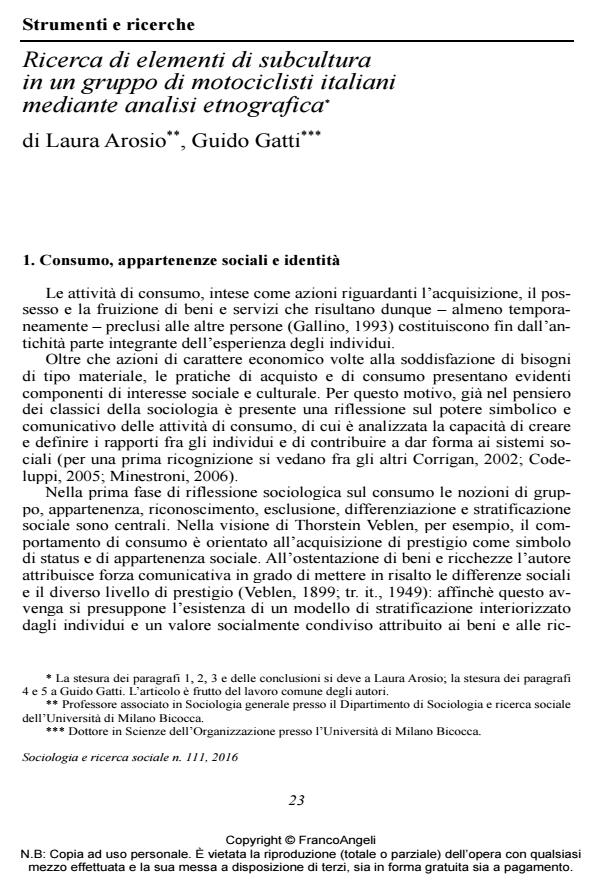Looking for Subculture Traits in a Group of Italian Bikers through Ethnographic Analysis
Journal title SOCIOLOGIA E RICERCA SOCIALE
Author/s Laura Arosio, Guido Gatti
Publishing Year 2016 Issue 2016/111
Language Italian Pages 17 P. 23-39 File size 182 KB
DOI 10.3280/SR2016-111002
DOI is like a bar code for intellectual property: to have more infomation
click here
Below, you can see the article first page
If you want to buy this article in PDF format, you can do it, following the instructions to buy download credits

FrancoAngeli is member of Publishers International Linking Association, Inc (PILA), a not-for-profit association which run the CrossRef service enabling links to and from online scholarly content.
In this article a group of Italian motorcyclists is analyzed using the conceptual and methodological tools of the contemporary theories on consumption and the idea of subculture of consumption. The ethnographic analysis, carried out through document analysis, observation and in depth interviews, shows the emotional connection of the subjects with the goods they own, and the role of consumption in the processes of creation of meanings and of construction of their identity. The motorcycle holds values that are shared by other members of the group, and create sense of unity. The subculture concept shows to be an effective tool to study a small group of nostalgic consumers present today in the Italian society, and therefore might be used in the analysis of other emergent phenomena of aggregation that develop both in person and through the Internet
Laura Arosio, Guido Gatti, Ricerca di elementi di subcultura in un gruppo di motociclisti italiani mediante analisi etnografica in "SOCIOLOGIA E RICERCA SOCIALE " 111/2016, pp 23-39, DOI: 10.3280/SR2016-111002